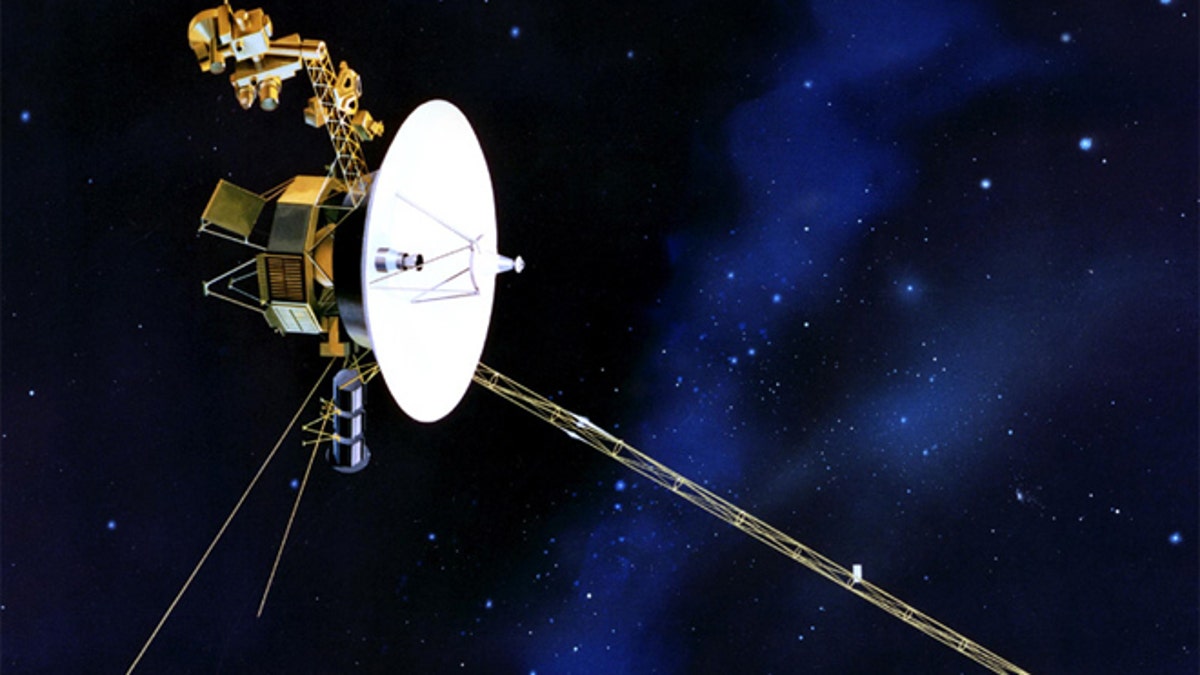
NASA's Voyager 1 spacecraft has finally left our solar system, 35 years after its launch. (NASA)
It keeps going ... and going ... and going ....
After cruising the “magnetic highway” that rings the very outskirts of the solar system, NASA's Voyager 1 spacecraft has entered a new and unexplored region of space, although it had yet to exit the solar system, NASA indicated.
"It is the consensus of the Voyager science team that Voyager 1 has not yet left the solar system or reached interstellar space," NASA's Jet Propulsion Lab said in a statement. "In December 2012, the Voyager science team reported that Voyager 1 is within a new region called ‘the magnetic highway’ where energetic particles changed dramatically. A change in the direction of the magnetic field is the last critical indicator of reaching interstellar space, and that change of direction has not yet been observed."
[pullquote]
The Voyager spacecraft was launched in 1977, and is far and away the most distant man-made object from the sun, at more than 11 billion miles away. A new study of cosmic rays and radiation posted online Wednesday in the peer-reviewed journal Geophysical Research Letters shows that the spacecraft has decisively left our corner of the sky, saying goodbye to the influence of the sun and the familiar eight planets that make up our cosmic neighborhood (sorry, Pluto).
- Through Curious eyes: NASA’s newest look at the Red Planet
- 35 years later, Voyager 1 is heading for the stars
- Deep-sea monsters have surprising DNA
- At far side of solar system, Voyager 1 discovers new region of space
- How physicists fill out their college hoops brackets
- Asteroid headed toward Earth? ‘Pray,’ NASA advises
“It’s outside the normal heliosphere, I would say that,” said Bill Webber, professor emeritus of astronomy at New Mexico State University in Las Cruces. “We’re in a new region. And everything we’re measuring is different and exciting.”
The heliosphere is a region of space dominated by the sun and its wind of energetic particles, and which is thought to be enclosed, bubble-like, in the surrounding interstellar medium of gas and dust that pervades the Milky Way galaxy.
According to the study, on Aug. 25, 2012, Voyager 1 measured drastic changes in radiation levels as it travelled the cold distant reaches of space. Anomalous cosmic rays, those that are trapped in the outer heliosphere, all but vanished, dropping to less than 1 percent of previous amounts. At the same time, galactic cosmic rays -- radiation from outside of the solar system -- spiked to levels not seen since Voyager’s launch, with intensities as much as twice previous levels.
“Within just a few days, the heliospheric intensity of trapped radiation decreased, and the cosmic ray intensity went up as you would expect if it exited the heliosphere,” Webber said. He calls this transition boundary the “heliocliff,” as in, "Voyager 1 just fell off the heliocliff."
That's the edge of our solar system, right? Mostly, Webber said.
As Voyager continues to boldly go where no man has gone before, scientists continue to debate just where it is. Whether Voyager 1 has reached interstellar space or entered a separate, undefined region beyond the solar system remains up for debate, Webber said.
In December, scientists said the craft was exploring an area at the far reaches of the solar system that they called “the magnetic highway,” the last stop before interstellar space.
They described the magnetic activity at that point in space as unlike anything seen before.
"The new region isn't what we expected, but we've come to expect the unexpected from Voyager," said Edward Stone, Voyager project scientist based at the California Institute of Technology, Pasadena.
